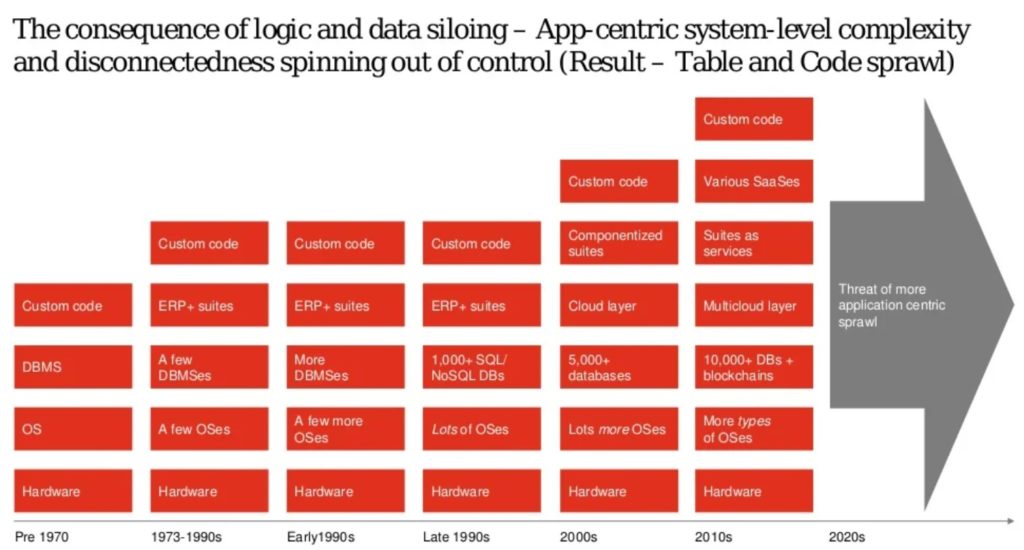
Ted Gioia, author of Music: A Subversive History, made an excellent point in an article in The Atlantic titled “Is Old Music Killing New Music?” posted in January 2022:
“I learned the danger of excessive caution long ago, when I consulted for huge Fortune 500 companies. The single biggest problem I encountered—shared by virtually every large company I analyzed—was investing too much of their time and money into defending old ways of doing business, rather than building new ones. We even had a proprietary tool for quantifying this misallocation of resources that spelled out the mistakes in precise dollars and cents.
“Senior management hated hearing this, and always insisted that defending the old business units was their safest bet. After I encountered this embedded mindset again and again and saw its consequences, I reached the painful conclusion that the safest path is usually the most dangerous. If you pursue a strategy—whether in business or your personal life—that avoids all risk, you might flourish in the short run, but you flounder over the long term. That’s what is now happening in the music business.”
A comparable situation exists in the world of information technology–the installed base of IT and the antiquated mentalities that perpetuate old IT are threatening to drown a number of the most promising innovations.
How old IT drowns the new
Today’s IT is an extremely careless beast. Semantic Arts President Dave McComb, who’s had decades of experience in enterprise IT consulting, wrote a entire book called Software Wasteland. (Full disclosure: I’ve done a bit of consulting for Semantic Arts, as well as help them out with events.)
This carelessness leads to massive amounts of waste. In an interview with InfoQ, McComb estimated that “most individual application projects are on the order of 10 -100 times more expensive than they could be.” That doesn’t leave much discretionary budget for transformation. He then goes on: “But the problem is more systemic than just fixing an individual application project; the ecosystem that the projects live in is the problem.”
The main dilemma from a software (and data) perspective is that, unless we fix the ecosystem, we keep reinventing the wheel, creating code sprawl, unnecessary data siloing and error-ridden complexity in the process. An application-centric architecture traps logic in application code. Most of that logic, instead of being trapped, could be shared, in the form of data, as logic within a knowledge graph, for example, where that logic would be accessible and reusable.
As Dave is fond of saying (paraphrasing here), the whole point of IT is to deliver insights from data needed for decision making. So why not craft an architecture that is data centric? In fact, Dave has led the creation of such an architecture. (The events I help out at SA with are focused on principles-based DCA, or data-centric architecture, in fact. See https://events.eventzilla.net/e/the-enterprise-data-transformation–knowledge-graph-adoption-symposium-2138821542, for example.)
The vast majority of large organizations have unthinkingly and passively adopted what I think of as a Tower of Babel approach to information architecture, with far less regard for the system as a whole than a data-centric approach.

Why leadership has overlooked the deeper transformation challenge
Chief information and data officer positions are notorious for their high turnover. The typical hiring process, it seems, has some major flaws. Some have recommended that boards of directors take more responsibility for hiring at the C-suite level. Many boards do approve hires for the CEO position, at least.
Many in entrenched IT and business units spend a lot of time protecting their own turf. So when a new exec comes in promising to make serious changes, those changes often get transformed into updating what is more or less the status quo.
Regardless, in today’s environment, considering the architectural quagmire companies are in, the CIO, CDO and CMO roles should be focused squarely on transformation. New data architecture will enable innovation. Merely maintaining the old will only inhibit growth. Code sprawl and data siloing quashes “digital” (what should be called data-centric) innovation.
The second-hand evidence from software subscription sales is that CIOs, CDOs and CMOs cave in to IT vendors who repackage the old and call it new:
- Cloud computing virtualized hardware and packaged software, but didn’t transform the data architecture.
- Software as a service (SaaS) got an AI facelift, making it possible for execs to add to their 1,000 to 10,000+ SaaS subscription sprawl and at the same time say they’re “using AI”.
- Statistical-only approaches to AI ignore the connections and logical consistency needed to manage data integration and interoperation at scale.
AI should harness much more than statistical machine learning to be viable. Denial is the main reason we keep waking up to AI winter every morning on Groundhog Day.
Free up data budget by cutting waste out of the application budget
There are clear ways to cut IT costs dramatically, and if you can help your company’s leadership to take advantage of some of them, you can free up budget for your data initiatives in the process.
It’s best to start by forging alliances with the enlightened, edgier leaders and their lieutenants who can help to build guerilla teams. With the right vision, those teams can tackle small, annoying pain points first to gain credibility. During the process, relationship building with friendlies inside of existing business units who are feeling the pain points is key.
There’s no substitute for managing up, trying to get leadership to recognize and correctly diagnose the weaknesses and risks, the biggest risk of which is inaction. Leaders have to apply some top down pressure and accountability to get innovation results.
Principles based, data-centric architecture advocacy isn’t for the faint of heart, but if you’re just perpetuating the old ways of doing things, you won’t save money. In fact, you’ll passively allow more budget bloat in areas already threatening to drown innovation initiatives.
